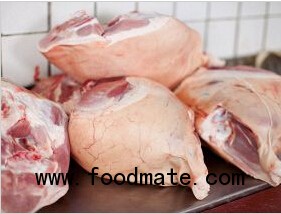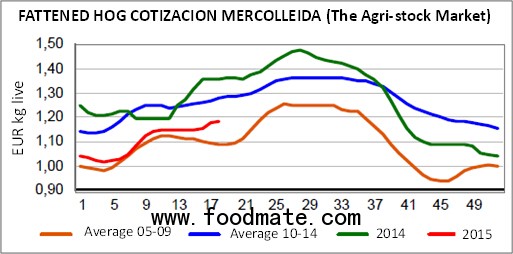
EU and Spanish Pork Market Complex
On one hand, Europe is improving and getting better performances.
As a result there are more pigs produced and, therefore, more meat.
Grain prices are not too bad, thus cost of production is better.
Slaughter weights are higher than in previous years.
Unfortunately, pork consumption in the European Union continues to be steady.
Everybody is still looking at the weather forecast to see if the northern European countries start lighting their barbecues with warmer weather to raise pork consumption.
On the other hand, the exchange rate of the euro against the dollar is getting closer.
It is almost a year since Russia banned European pork and at this point, there is no clue what the future will be.
So most of the exports are aiming to the Asian market, where competition between the EU and North America is very strong.
Germany has increased its slaughtering by two per cent in 2015 and has not been able to compensate with other destinations what the country had shipped to Russia a year ago.
Overall, the EU this year has increased its exports to third countries, although it has not been able to maintain the quota, which it had in 2013 before Russia closed its borders.
Spain’s domestic consumption remains steady because the financial crisis continues, consequently pork prices have been not been able to rise.
Being the fourth largest producer in the world, the country exports the same amount as it consumes domestically.
Spain is the exception in the EU, because it has managed to export more than in previous years, and has fewer exports to the EU than to third countries.
Because of this has been sustained and hog production maintained.
Compared to the rest of the EU, Spain has increased its exports to third countries and within the EU exports have decreased.
Spain has exported more to Japan, with 15,355 tonnes, 46 per cent higher than last year, in the first quarter of 2015.
Korea, the Philippines and Taiwan are destinations that are increasing their demand.
While China continues to maintain its demand, Spain has increased its pork exports by 16 per cent, becoming the second largest exporter of pork to China after Germany and beating USA and Denmark.
Spain has also increased exports to Hong Kong by nearly 3,000 tonnes, reaching 8,000 tonnes.
As for the prices pork has fallen to the value five years ago (as can be seen in the chart), but the value of the euro is now nearly equal to the dollar and grain prices are lower back to prices of 2009-2010.

At this time of year, the price of pork in Europe and in Spain, should rise.
In Spain the price has slowly risen to € 1.185 / kilo live weight at the end of last week, with one kilo more carcase weight than a year ago.
In Portugal, in the first quarter of 2015, data from SIMA (Information System Agricultural Markets) show that exports of frozen pork meat have decreased by 6,529 tonnes compared to 8,384 tonnes in the same period of 2015, while fresh meat exports have increased by three to 22,051 tonnes.
At the close of trading on 21 May 21 the Bolsa do Porco of Montijo the price was 2.17 € / kilo.
On 6 and 7 May the 10 International Technical Meeting Magapor Porcine Reproductive Specialist took place in Zaragoza . There were 250 participants from 30 different countries. Among the speakers Garth Braun, General Manager at the Canadian Center of Gene Transfer in Manitoba, Canada spoke on "Frozen semen: Application and advantages / disadvantages of the technique”.





